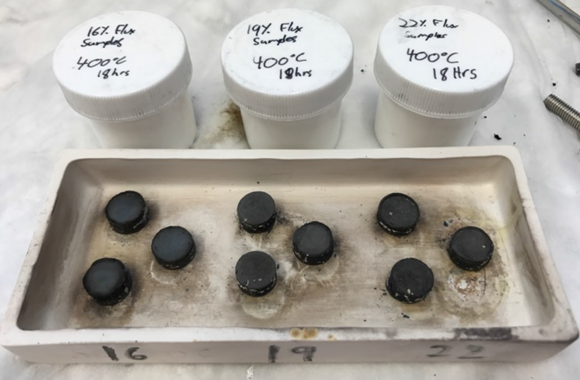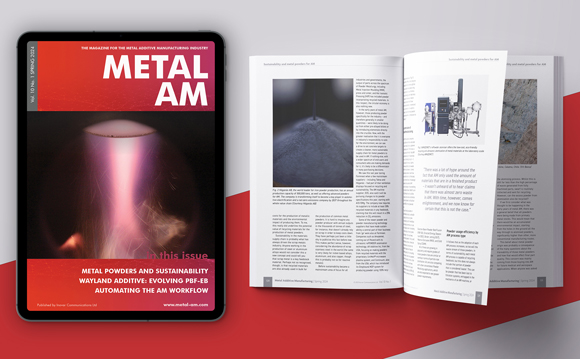NASA publishes study on air-sinterable aluminium-tin ink for use on International Space Station
July 3, 2019

Aluminium-tin ink samples produced and sintered as part of the study (Courtesy NASA)
NASA has published a technical report on the generation of an aluminium-tin ink that can be sintered in air and exhibits properties near that of a solid aluminium-tin alloy. Authored by Z S Courtright, of NASA’s Marshall Space Flight Center, Huntsville, Alabama, USA, and C W Hill, Jacobs Engineering and Science Services and Skills Augmentation Group, Huntsville, Alabama, USA, the study investigates the optimisation of the ink and its potential future use on the International Space Station.
Powder-based Additive Manufacturing processes, such as Laser Powder Bed Fusion (L-PBF), cannot be used in outer space due to the need for metal powders which would diffuse into the atmosphere in a zero-gravity environment. The researches state that metallic ink AM is a potential solution to this problem.
The study looks at work being done on a project focused on developing an air-sinterable aluminium-tin ink, which does not require a vacuum or an inert gas-purged atmosphere to prevent the oxidation of the aluminium. Once a potential ink composition has been determined, the optimal ink thickness for homogeneous sintering must be determined by additional experimentation, by sintering small disks and thin layers of ink. It will then be studied in an nScrypt multi-material Additive Manufacturing system at NASA’s Marshall Space Flight Center in future experiments.
If successful, the aluminium-tin ink developed by the researchers will be suitable for use on the International Space Station for the production of replacement parts. Along with its suitability for zero-gravity manufacturing environments, the ink may also have applications on Earth due to its ability to be extruded on a substrate with precise ceramic tips, allowing for the fabrication of precise, complex shapes at much faster speeds than possible with more widely-used powder bed AM processes.
















